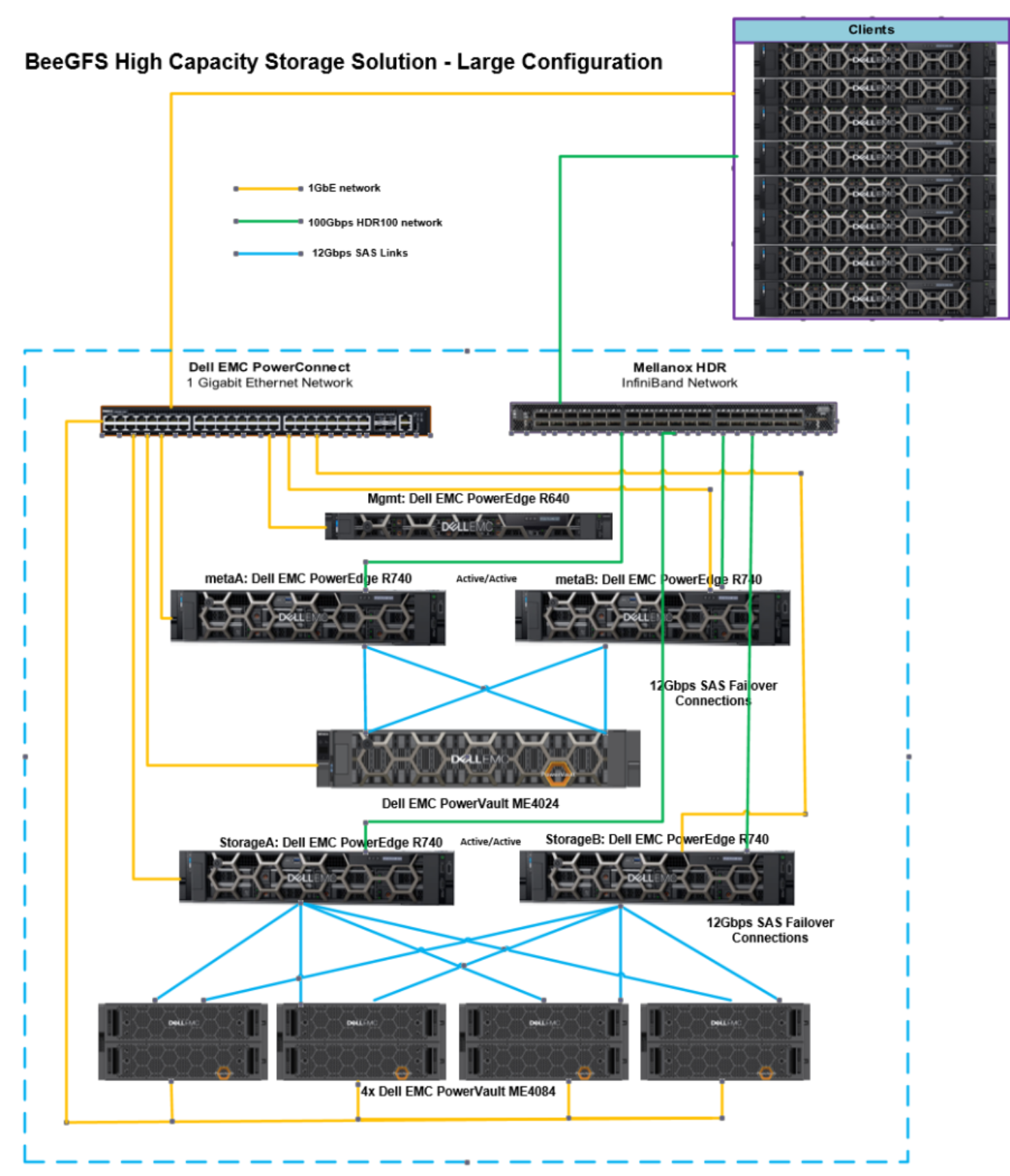Home > Workload Solutions > High Performance Computing > White Papers > Dell Technologies Validated Design for Genomics with NVIDIA Clara Parabricks On AMD-powered Dell PowerEdge > Storage
Storage
-
Dell Technologies offers a wide range of general purposes and HPC storage solutions. For a general overview of the Dell HPC solution portfolio, browse www.dellemc.com/hpc.
There are typically three tiers of storage for HPC, which differ in terms of size, performance, and persistence:
- Scratch storage
- Operational storage
- Archival storage
Scratch storage tends to persist during single data analysis. It may be used to hold temporary data, which is unable to reside in main memory of the compute system due to insufficient physical memory capacity.
If access to storage impedes the progress of the data analysis, HPC applications may be considered “I/O bound.” For these HPC workloads, typically the most cost-effective solution is to provide sufficient direct-attached local storage on the compute nodes. Sometimes the application may require a shared file system across the compute cluster. A high-performance shared file system may be better suited than relying on local direct-attached storage.
Typically, direct-attached local storage offers the best overall price/performance and is considered best practice for most next-generation sequencing (NGS) data analysis. For this reason, Dell Technologies includes local storage in the recommended configurations, with appropriate performance and capacity for a wide range of production workloads.
Note: Anticipated workload requirements can exceed the performance and capacity that the recommended local storage configurations provide. Take care to size scratch storage appropriately based on the workload.
For customers who want a shared high-performance parallel file system, the Dell Technologies Validated Design for BeeGFS Storage solution is appropriate. See the figure below. This solution can scale up to multiple petabytes of storage.

Figure 1. Dell Technologies Validated Design for BeeGFS Storage
